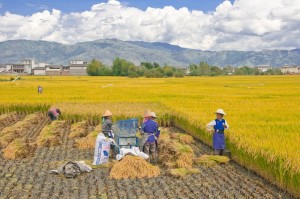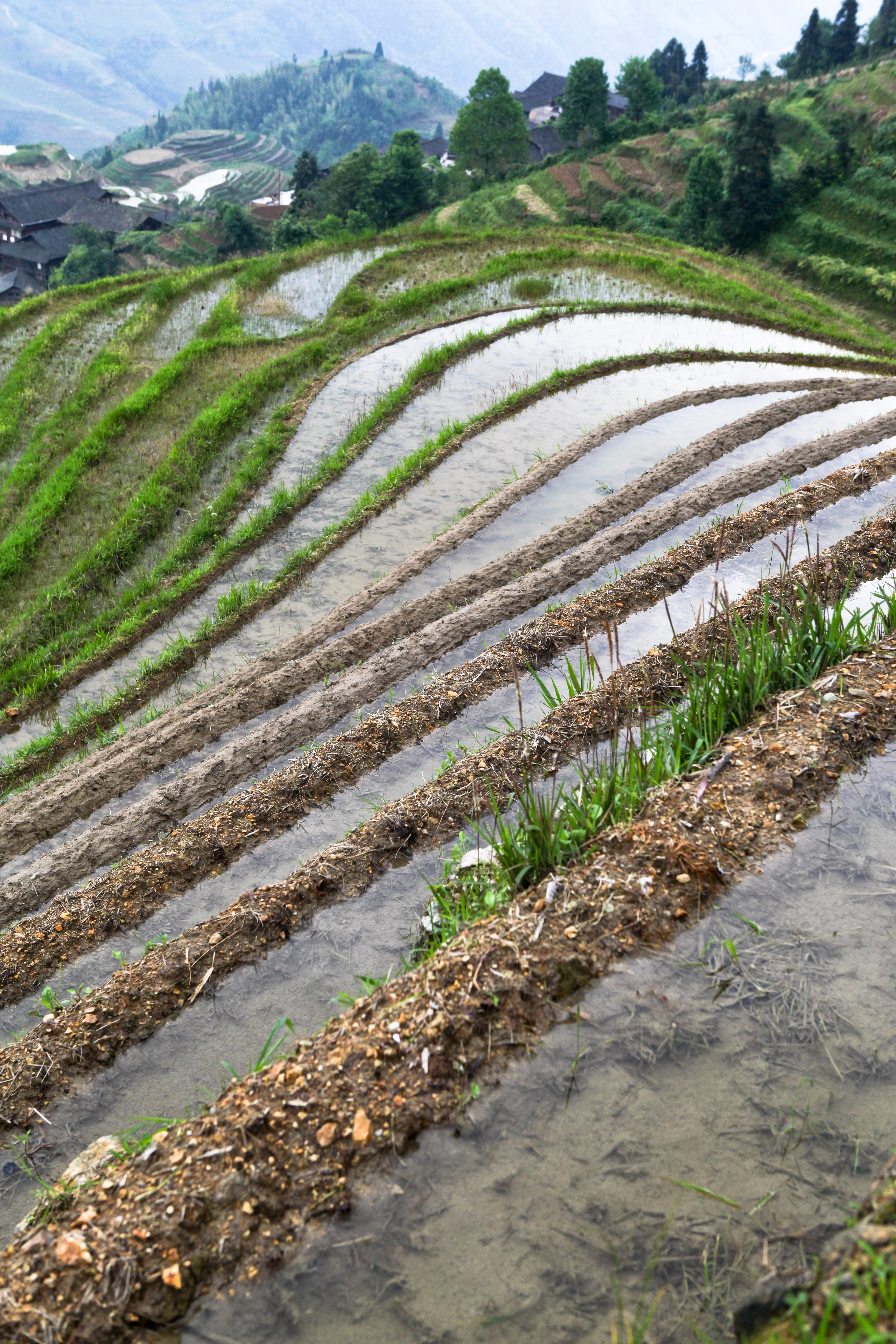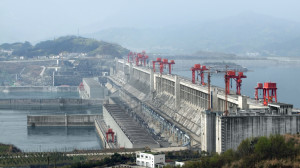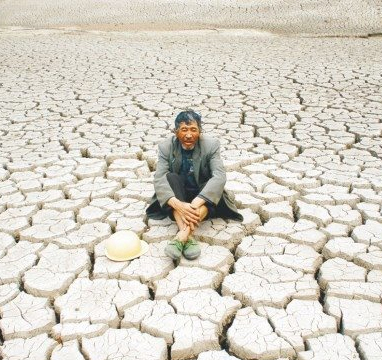Sino-Indian Relations: Realists and Rivals
Introduction
The two most populous nations in the world, China and India share a disputed border, are both on the rise economically and politically, and both possess fearsome nuclear arsenals. Their rapidly changing economic and diplomatic positions have put not only their relationships in the wider world in flux, but they have also created a shifting engagement with each other. While China and India’s ever-closer economic ties have created a degree of optimism that their developing relationship will be harmonious and productive, territorial disputes, competition for spheres of influence within South Asia, and increasing friction over water rights will continue to significantly challenge their relationship.
Historical Ties
Throughout ancient times, the link between India and China has been limited; theHimalaya formed a formidable natural barrier between the two civilizations. The most significant Indian contribution to Chinese culture was the transmission of Buddhism into China during China’s Age of Division 220-618 CE. Although the exact time and manner of Buddhism’s spread to China is still debated, it is likely that it made its way to China over the Silk Road, following merchants engaging in trade between the empires. Chinese scholars and monks also travelled to India to study Buddhism and to translate its scriptures. The most famous of these monks was Xuanzang, whose travels to and seventeen year stay in India were fictionally immortalized in the Chinese story, “Journey to the West”, considered one of the four great classics of Chinese literature.
In the modern era, with India colonized by the British, exports of opium to the Chinese mainland eventually led to the two Opium Wars of 1839-1842 and 1856-1860 between Britain and the Qing Dynasty of the time, though the involvement of what we now think of as India was incredibly limited, as it was a colony of Britain at the time. The post-Second World War period was a time of dramatic change for both countries. India was granted its independence from Britain in August 1947. The process of India’s independence was complicated by its separation from Pakistan which the British enacted immediately before granting independence to both nations as separate entities. Violence followed between the two new countries. Indeed, more than six decades after their separation, India and Pakistan remain at odds on many issues. Similarly, in China, violence ensued until the People’s Republic of China was founded in 1949 as Chiang Kai-shek’s Nationalists, and Mao Zedong’s Communists fought for control of the country. This meant that two giant new nations, both with extensive territories and massive populations, both recovering from differing forms of colonialism and struggling to find their place in the new world order, were created within a very short space of time. Despite their very long histories as civilizations, China and India are thus relatively new nation states. Their early dealings with each other have reflected their struggles to adjust to their relatively new country status and their efforts to find their place in the post WWII international order.
One early contribution that the Sino-Indian bilateral relationship made to wider international relations was the 1954 agreement in which was stated the “five principles of peaceful coexistence”. These principles were agreed as part of a treaty relating to Indian trade with Tibet, over which China had regained suzerainty. The five principles became both the founding principles of the Non-Aligned Movement (NAM) – a grouping of countries that sought to distance themselves from the Cold War by refusing to align with either superpower – and the cornerstone of China’s foreign policy, at least rhetorically. The five principles were: mutual respect for territorial integrity and national sovereignty; mutual non-aggression; mutual non-interference in the other’s internal affairs; equality and mutual benefit; and peaceful coexistence. At the heart of these principles is the agreement not to infringe the sovereignty of another country. Yet, despite their mutual commitment to these principles, within just a few years China and India were at war with each other.
The 1962 Border War
Following the 1959 Tibetan uprising – which was repressed by the Chinese military and resulted in the Dalai Lama’s fleeing into exile in India – there were several skirmishes between Chinese and Indian troops along the border. The border had never been successfully demarcated between the nations of China and India. An agreement reached in 1913 over the border between British India and Tibet – at the time conducting affairs as a pseudo-independent nation following the breakup of the Qing Dynasty – has been consistently rejected by the PRC, despite the apparent presence of Chinese representatives at the negotiations. China refuses to acknowledge any agreement made with the Tibetan authorities as it declines to recognize that Tibet had any level of suzerainty in this period of history. Interestingly, China’s refusal to recognize this agreement has some validity as it was, in fact, in breach of the Anglo-Russian Entente. Signed in 1907, but annulled in 1922, it stated that all dealings with Tibet must be conducted through the Chinese authorities in Beijing.
In October 1962 China invaded Aksai Chin and Arunchal Pradesh, the two largest portions of disputed territory over which it claimed sovereignty, but which were occupied by the Indians at the time. The simultaneous invasions were over a thousand of miles apart. The war lasted precisely one month, with the Chinese winning a military victory and successfully occupying much of the disputed areas. However, once military superiority had been established, a ceasefire was called and the Chinese unilaterally withdrew from all the territory they had gained in the offensive. While China’s real reasons for unilaterally withdrawing and ending hostilities are still debated, it is likely that a key reason for their retreat was the prospect of US involvement in the conflict, which raised concerns in China of an unwanted and unnecessary war with the superpower. Premier Zhou Enlai insisted that the withdrawal was a signal of good faith and that China had always wished to resolve the dispute peacefully.
The casualties in the war were relatively small, with an estimated 2000 Indians and more than 700 Chinese troops thought to have been killed. However, the consequences for the relationship and the region as a whole were extensive. While the Chinese succeeded in demonstrating their military superiority over their Indian rivals, the invasion harmed their international image and fed the belief in the West that China was a belligerent power intent on using aggressive means to expand its territory and influence. The lesson learned by India was that its military was woefully underprepared and wholly inadequate for purposes of self-defense. It therefore set about wholesale modernization of its military capabilities.
Territorial Issues
Territorial disputes are probably the greatest issue of difficulty between China and India. The disputes involve ten separate portions of territory, though several of these are tiny. There are two particularly significant areas: the more than 60,000 square km – around three quarters – of what India, and most other countries in the world, consider to be the state of Arunachal Pradesh; and the 37,000 square km Chinese-administered Aksai Chin, to the west of Nepal. It was these two areas over which the 1962 war was fought. At the time the Arunachal Pradesh was sparsely populated, but is now home to around one million Indian citizens. Since the 1962 war there have been many skirmishes along the disputed area, most notably in 1967 and 1987.
The disputes involve ten separate portions of territory, though several of these are tiny. There are two particularly significant areas: the more than 60,000 square km – around three quarters – of what India, and most other countries in the world, consider to be the state of Arunachal Pradesh; and the 37,000 square km Chinese-administered Aksai Chin, to the west of Nepal. It was these two areas over which the 1962 war was fought. At the time the Arunachal Pradesh was sparsely populated, but is now home to around one million Indian citizens. Since the 1962 war there have been many skirmishes along the disputed area, most notably in 1967 and 1987.
Given the size of the larger territories under dispute, it is politically difficult for either country to concede the territory to the other. This is especially true in the case of Arunachal Pradesh, which would be tantamount to the the Indian government effectively giving away the majority of an established Indian state. The other major disputed area, Aksai Chin, is considered by India to be a part of Kashmir and therefore complicates the matter further, given that India is already contesting Kashmir with Pakistan. Certainly, no solution to the current impasse appears imminent and the failure of the two great powers to resolve this remains a constant thorn in the side of diplomatic relations of the two. With that noted there has been some limited success in reaching agreement over the Indian state of Sikkim; initially claimed by both India and China but effectively operating as an independent state, Sikkim voted to join the Indian Federation in 1975. China originally refused to recognize this and continued to display Sikkim as a separate state on maps produced in the PRC. In 2004, it finally accepted it as an Indian state, although it did so with little fanfare.
As with most territorial disputes around the world the problem is exacerbated by nationalists on either side, who are prone to react to even the slightest provocation. Though nationalist responses in China are not as prominent as those that are directed against Japan or the US from time to time, India has emerged as a target for outpourings of nationalist sentiment, particularly over the issue of the disputed territory. Simon Shen, an academic who specializes in Chinese online nationalism, has identified that China’s online nationalists have turned their attention to India in recent years and use the government’s reaction to any perceived provocation as something of a litmus test. India also has its share of hotheaded protesters who make themselves heard whenever China acts in ways considered to infringe on India’s sovereignty over these areas.
Tibet
For historical, religious, cultural and geographical reasons, India continues to play a role in the Tibet issue. Homeland to the Tibetan people, and located on the high plateau of the north-eastern Himalaya, Tibet was unified in the 7th century, but then fractured into various territories which have since been controlled at various times by Tibetans, the Mongols and the Chinese. Tibet has been part of the People’s Republic of China since 1951, though full control by Beijing was only established following a military advance into the region in 1959. While China’s sovereignty over Tibet is accepted by the international community, its continued rule there remains controversial with the Dalai Lama continuing to campaign internationally for the Tibetan people to be allowed greater autonomy. Though China insists that the Tibet issue is a purely domestic matter in which no other country must interfere, India is inescapably intertwined in the problem. This is, primarily due to the fact that when the PLA rolled into Tibet in 1959, the Dalai Lama fled to India where he was given asylum, and allowed to establish the Tibetan “government in exile” – in the northern Indian town of Dharamsala. There have certainly been times since 1959 when the Indian government has wished it could bring an end to its own involvement in order to ease its strained relationship with China over this issue, but the Dalai Lama’s successful international promotion of the Tibetan cause has made this an impossibility, at least while he remains alive. For its part, China continues to raise this matter with Indian leaders, particularly whenever Tibetan refugees flee across the border to seek asylum there.
Mongols and the Chinese. Tibet has been part of the People’s Republic of China since 1951, though full control by Beijing was only established following a military advance into the region in 1959. While China’s sovereignty over Tibet is accepted by the international community, its continued rule there remains controversial with the Dalai Lama continuing to campaign internationally for the Tibetan people to be allowed greater autonomy. Though China insists that the Tibet issue is a purely domestic matter in which no other country must interfere, India is inescapably intertwined in the problem. This is, primarily due to the fact that when the PLA rolled into Tibet in 1959, the Dalai Lama fled to India where he was given asylum, and allowed to establish the Tibetan “government in exile” – in the northern Indian town of Dharamsala. There have certainly been times since 1959 when the Indian government has wished it could bring an end to its own involvement in order to ease its strained relationship with China over this issue, but the Dalai Lama’s successful international promotion of the Tibetan cause has made this an impossibility, at least while he remains alive. For its part, China continues to raise this matter with Indian leaders, particularly whenever Tibetan refugees flee across the border to seek asylum there.
Competition for Water Resources
Tibet is also relevant to Sino-Indian relations as it is the source of the Brahmaputra River which provides significant water and power resources for Bangladesh and India. To take advantage of Tibet’s vast hydro power, China is planning a series of dams on the various transnational rivers that originate there. One of its proposed mega-dam projects is on the Brahmaputra, where it does a big U-turn in the world’s deepest canyon before entering India, close to one of the borders disputed by the two countries. This bend on the Brahmaputra is considered to be one of the world’s largest concentrations of river energy on earth. This mega-dam at the Brahmaputra is just one of what is estimated to be as many 28 dams on the Brahmaputra that are either planned, completed or under discussion by China. While China denies it, some Indian scientists also fear that China might also be planning to divert 200 billion cubic meters of water a year from the Brahmaputra to the Yellow River and other Chinese rivers.
China’s damming of the Brahmaputra puts control of a key source of Indian water into Chinese hands. More than 185 million people in north-eastern India and Bangladesh depend on the Brahmaputra. In the Indian state of Assam, 80 per cent agriculture relies on water from the river. Damming also affects a river’s ecosystem, altering silt and nutrient flows that risk impacting India’s downstream fertility and fisheries. Additionally, India derives significant power from its own hydroelectric projects on the river and its tributaries. The efficacy of these dams could be affected if China significantly alters the river’s flow volumes
Competition for Influence
As large and now rising nations, China and India have competed for and will continue to compete for influence in Asia and abroad. One keen area of competition is in Nepal and Myanmar. There is a difference in motive for the two of these countries. Nepal is considered to be a buffer state between the two powers, so that influence and access within Nepal is a strategic priority for both China and India. In any potential conflict between the two countries, Nepal would have clear tactical importance. Myanmar, on the other hand, is important to both countries as a source of natural resources, particularly natural gas. To seek influence in Nepal and Myanmar, China and India provide both countries with badly needed infrastructural investment; both Nepal and Myanmar have some of the worst infrastructure in the world. China in particular has been focused on building crucial road links throughout Nepal and into China, boosting trade and enhancing ties between the two countries.
While Nepal and Myanmar are important considerations, the relationship with Pakistan is potentially explosive. China has been Pakistan’s long term ally, while Pakistan remains India’s greatest foe, a consequence of the fact that most Indians opposed Pakistan’s separation from India before independence. During the Sino-Indian 1962 border war, Pakistan saw an opportunity to develop a strategic relationship with a large neighbor that would help to balance against what it perceived as the threat of Indian invasion. For its part, China sees its relationship with Pakistan as a way to offset what it believes to be a US strategy to contain China, which the US employs by forming strategic partnerships with significant powers surrounding China, revolving around the axis of Japan, Australia and India. There is unquestionably some truth in this analysis of US intentions, and India’s position within this alliance system is very important. The continuance of friendly relations with Pakistan is one way China works to counter this US strategy, though this has been complicated over recent years by the US-Pakistan alliance that formed in the wake of the 9/11 attacks. China’s engagement with Pakistan involves it in India’s most prickly international issue, Kashmir, which in turn causes further friction with India at both the government and the societal levels.
China and India are also now beginning to come into direct competition for influence and access to resources in Africa. China’s engagement with Africa has increased significantly in the last two decades as it looks to Africa both as a source of raw materials and as a market for its goods. India’s foray into Africa is still in its early stages, but it is already clear that both countries are pursuing differing strategies within the region. India’s investment strategy has been led by the private sector, where China’s incursion into Africa has been led by large SOEs and government ODA seeking access to Africa’s raw materials such as its oil and timber. Indian multinational companies are seeking to penetrate African markets by exploiting the comparative advantage of a significant Indian diaspora on the continent, as well as the ability of its nationals to speak English. That said, as competition for the continent increases, India’s government seems increasingly willing to engage to secure its competitive position. In 2011 for instance, Manmohan Singh, India’s Prime Minister, announced a three year aid package to Africa worth $5 billion. While significant, it is still dwarfed by Chinese aid that currently tops $20 billion per annum. As the China and India continue their rapid development, this competition for access to Africa’s resources and markets is likely to increase in the future though, for now at least, China appears better placed to take advantage.
Bilateral Trade
Though bilateral trade is not as large as one might expect given the sizes of the two nations, it offers one of the best chances to promote a cooperative coexistence between the two Asian giants. China is already India’s largest trading partner and in 2011 bilateral trade topped $74 billion, though this fell back slightly in 2012 to $66 billion. The 2012 reduction in trade was driven almost entirely by a 20% drop in Indian exports to China, with the trade deficit now $29 billion. Total bilateral trade is projected to reach $100 billion by 2015 with potential for even faster growth after that.
China does not offer India economic complementarity in the way that it does to some of its richer neighbors to the east, such as Japan and South Korea. India, whose population is expected to surpass China’s within two decades, also competes to be a hub for low-cost manufacture out-sourcing. However, India provides China with raw materials; ore and slag, for instance, account for more than a quarter of all Indian exports to China. India also exports $1.5 billion dollars of cotton to China annually, providing a crucial source of supply to China’s critical textile industry, which is the world’s largest and responsible for a quarter of all Chinese exports. In contrast, Chinese exports to India are predominantly in manufactured goods, in particular electrical machinery which represents around a third of total Chinese exports to India. The fact that India exports raw materials to China and China returns finished goods reflects a slightly imbalanced relationship; indeed, India ran a trade deficit of around $20 billion with China in 2010. Nevertheless, deeper economic ties with China remain in India’s long term interests. Overall, India is developing its own economy in different ways to China. Specifically, India has focused on information technology and services. China’s rapidly growing IT market, which already boasts the greatest number of internet users in the world, offers opportunity for India’s leading IT firms. For instance, Infosys Technologies, an Indian IT firm, set up a Chinese subsidiary as far back as 2004. While its Chinese subsidiary still derives the majority of its income from outside of China, the Chinese domestic market now accounts for one third of its profits; this is projected to grow in the coming years. By 2014, Infosys predicts its Chinese subsidiary will employ 10,000 people, triple what it does today. The Tata Group, through Tata Consultancy Services (TCS), has also established a significant presence in China. It exports IT services to the Chinese banking sector, with Bank of China among its most notable clients. Its workforce in China is expected to quadruple over the next three years, taking the total number of its employees to over 5000. Following in TCS’ wake is India’s Wipro Technologies which has plans to center its Asian operations in China’s western city of Chengdu, in order to focus on growing its Asian market, and to diversify away from the US and Europe. India’s other great success story in China has been Mahindra & Mahindra, a manufacturer of tractors. Mahindra & Mahindra has established two joint venture tractor manufacturing companies in China which, combined, account for more than 30,000 employees and produce more than 30,000 tractors each year, many of which are exported to Europe or India. Indian IT firms are also seeking Chinese investment. By June 2009, the total Chinese investment in IT in India reached almost $30 billion. Much of this came from the Chinese giant Huawei.
its richer neighbors to the east, such as Japan and South Korea. India, whose population is expected to surpass China’s within two decades, also competes to be a hub for low-cost manufacture out-sourcing. However, India provides China with raw materials; ore and slag, for instance, account for more than a quarter of all Indian exports to China. India also exports $1.5 billion dollars of cotton to China annually, providing a crucial source of supply to China’s critical textile industry, which is the world’s largest and responsible for a quarter of all Chinese exports. In contrast, Chinese exports to India are predominantly in manufactured goods, in particular electrical machinery which represents around a third of total Chinese exports to India. The fact that India exports raw materials to China and China returns finished goods reflects a slightly imbalanced relationship; indeed, India ran a trade deficit of around $20 billion with China in 2010. Nevertheless, deeper economic ties with China remain in India’s long term interests. Overall, India is developing its own economy in different ways to China. Specifically, India has focused on information technology and services. China’s rapidly growing IT market, which already boasts the greatest number of internet users in the world, offers opportunity for India’s leading IT firms. For instance, Infosys Technologies, an Indian IT firm, set up a Chinese subsidiary as far back as 2004. While its Chinese subsidiary still derives the majority of its income from outside of China, the Chinese domestic market now accounts for one third of its profits; this is projected to grow in the coming years. By 2014, Infosys predicts its Chinese subsidiary will employ 10,000 people, triple what it does today. The Tata Group, through Tata Consultancy Services (TCS), has also established a significant presence in China. It exports IT services to the Chinese banking sector, with Bank of China among its most notable clients. Its workforce in China is expected to quadruple over the next three years, taking the total number of its employees to over 5000. Following in TCS’ wake is India’s Wipro Technologies which has plans to center its Asian operations in China’s western city of Chengdu, in order to focus on growing its Asian market, and to diversify away from the US and Europe. India’s other great success story in China has been Mahindra & Mahindra, a manufacturer of tractors. Mahindra & Mahindra has established two joint venture tractor manufacturing companies in China which, combined, account for more than 30,000 employees and produce more than 30,000 tractors each year, many of which are exported to Europe or India. Indian IT firms are also seeking Chinese investment. By June 2009, the total Chinese investment in IT in India reached almost $30 billion. Much of this came from the Chinese giant Huawei.
Like many foreign companies working in China, Indian firms have also complained of barriers to their entering and expanding within the Chinese market. These barriers are increasingly being raised at the highest political levels. Complaints from the Indian side are met with calls from China for a bilateral Free Trade Agreement (FTA). Although India has been reluctant to agree to this until its trade deficit with China has been tackled, such an agreement, if signed, would represent the largest free trade area in the world measured in size of populace.
The BRICS Nations
Another area of promising cooperation between China and India is their involvement with the BRICS nations – Brazil, Russia, India, China and South Africa. The name originally came from an economist working for Goldman Sachs, who coined the term ‘BRIC’ in 2001 (South Africa was not included in either the original thesis or the initial gatherings of the countries) when writing about the shift in global power balances from the large developed western countries to the large developing ones. Initially not a formal structure, the four BRIC countries sought to capitalize on the success of the term by launching annual summits in 2009, where the countries meet to discuss their positions in the global order and to call for greater equity within it. South Africa was invited to join at the end of 2010 and attended its first summit in 2011. Both Brazil and India seek to exploit the status of the alliance in order to promote their aspirations for permanent membership of the UNSC, though declarations from the BRICS summits do not go as far as to directly call for this. Questions have been raised about the continued relevance of the grouping with varying degrees of economic growth; in 2012, only India and China surpassed GDP growth of 5% with South Africa as low as 2.8%.
Future Trends
Of the potentially disruptive issues that remain in the Sino-Indian bilateral relationship, the territorial dispute is probably the thorniest. There is seemingly some room for maneuver on China’s part in the disagreement over Arunachal Pradesh; certainly it seems impossible that the Chinese would try to make good their claims on an area that is widely recognized internationally as Indian territory and which is populated by more than one million Indian citizens. However, other disputes seem more intractable, particularly where Kashmir comes into the equation. Acts of insensitivity on either side are likely to continue to provoke minor spats, but the prospect of armed conflict between the two is highly remote. Indeed, informal talks on this very issue were held in Beijing in December 2012, though without any significant movement. The last formal negotiation on the matter took place in January of the same year.
The Tibet issue seems likely to continue to be an irritant as long as the Dalai Lama  survives. It is probably China’s own calculation on this issue as a whole, not just with India, that the Dalai Lama’s death will help to remove Tibet from the intense international focus that it has been under for the last few decades. From India’s perspective, the trouble the Dalai Lama has caused has likely overwhelmed any soft power that it may have accrued as a result of it providing the Tibetan leader with asylum. There is probably understanding at the highest political level in the bilateral relationship that there is little that can be done in the short term over this issue.
survives. It is probably China’s own calculation on this issue as a whole, not just with India, that the Dalai Lama’s death will help to remove Tibet from the intense international focus that it has been under for the last few decades. From India’s perspective, the trouble the Dalai Lama has caused has likely overwhelmed any soft power that it may have accrued as a result of it providing the Tibetan leader with asylum. There is probably understanding at the highest political level in the bilateral relationship that there is little that can be done in the short term over this issue.
China’s water disputes with its neighbors will likely be a growing problem, particularly given the unprecedented level of its dam building. Tension over water rights with India will be no exception. What is unclear is what its downstream neighbors can do about China’s hydro ambitions. It will likely be an increasing source of acrimony between China and India, especially as India plays catch-up to China’s water projects. India might voice these concerns more vocally on the world stage. It might also gain influence and leverage with other countries that are similarly vulnerable to China’s hydro ambitions to place economic and other pressures against the country.
It is in the economic ties that the greatest reasons for optimism lie. The different directions that the two economies have taken in their development mean that the potential for bilateral growth is significant. For both countries economic development is key and will continue to be so. They share much in common in terms of the continued need to raise large sections of their population out of poverty, a problem that is particularly pronounced in India. The incentive to stay focused on trade rather than to get tied down by territorial disputes or regional competition should remain at the forefront of the minds of policymakers on both sides of the Himalaya.
The election of Narendra Modi as India’s new prime minister in 2014 brought some new-found optimism given his pragmatic approach to international relations and prioritisation of economic cooperation. Modi was already popular in elite circles in China thanks to his careful diplomacy when serving as a regional leader in Gujurat, during which time he made numerous trips to Beijing. Nevertheless, the many thorny issues in the relationship cannot simply be washed away and the presence of Tibet’s prime minister-in-exile at Modi’s swearing in ceremony indicated that he would not simply roll over and acquiesce to all of Beijing’s demands.





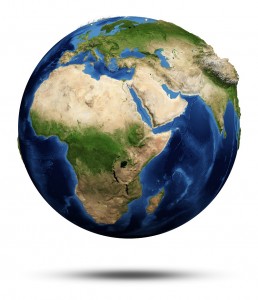
 Unlike the other autonomous regions in China, Tibet has maintained its ethnic identity throughout the history of the PRC; whereas the Uyghurs in Xinjiang, the Hui in Ningxia, the Mongols in Inner Mongolia, and the Zhuang in Guangxi all now account for less than half of the population in their respective areas, Tibetans still represent 92% of the population in their own autonomous region. This is, however, changing rapidly. The opening of the world’s highest railway connecting Qinghai to Lhasa – an impressive engineering feat that takes trains across mountain passes over 5200 meters high – has enabled a much greater flow of people into, and out of, the TAR. Han Chinese currently make up around 6% of the population, but that number is beginning to rise as the Chinese government encourages Han migration into the areas by providing incentives such as housing, business, and pension benefits. Indeed, It is estimated that Han Chinese now make up 50% of the population of the capital city, Lhasa, and the Chinese government is heavily investing in the city’s infrastructure to raise the city to modern Chinese standards. Beijing says that the Han economic migrants have temporarily come to Tibet in order to help modernize the area. Some Tibetans fear that China will use demographics as a way to more thoroughly integrate the region into China. Visitors to Lhasa are keenly aware of the division with the city almost literally split into two areas, one almost entirely Tibetan and the other almost entirely Han.
Unlike the other autonomous regions in China, Tibet has maintained its ethnic identity throughout the history of the PRC; whereas the Uyghurs in Xinjiang, the Hui in Ningxia, the Mongols in Inner Mongolia, and the Zhuang in Guangxi all now account for less than half of the population in their respective areas, Tibetans still represent 92% of the population in their own autonomous region. This is, however, changing rapidly. The opening of the world’s highest railway connecting Qinghai to Lhasa – an impressive engineering feat that takes trains across mountain passes over 5200 meters high – has enabled a much greater flow of people into, and out of, the TAR. Han Chinese currently make up around 6% of the population, but that number is beginning to rise as the Chinese government encourages Han migration into the areas by providing incentives such as housing, business, and pension benefits. Indeed, It is estimated that Han Chinese now make up 50% of the population of the capital city, Lhasa, and the Chinese government is heavily investing in the city’s infrastructure to raise the city to modern Chinese standards. Beijing says that the Han economic migrants have temporarily come to Tibet in order to help modernize the area. Some Tibetans fear that China will use demographics as a way to more thoroughly integrate the region into China. Visitors to Lhasa are keenly aware of the division with the city almost literally split into two areas, one almost entirely Tibetan and the other almost entirely Han.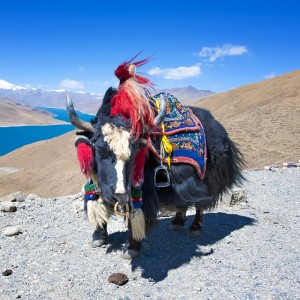
 The 13th century Mongol subjugation of Eurasia brought Tibet and China under one rule for the first time when both countries became subject nations under the Mongol empire. Having conquered China, Kublai Khan consolidated his rule by proclaiming himself the Emperor of the
The 13th century Mongol subjugation of Eurasia brought Tibet and China under one rule for the first time when both countries became subject nations under the Mongol empire. Having conquered China, Kublai Khan consolidated his rule by proclaiming himself the Emperor of the 

 However, whatever the rights and wrongs of the legal or moral claim that China may have over Tibet, there is no question that many Tibetans suffered both during the ‘liberation’ and after, particularly through forced collectivization and during the Cultural Revolution. In this latter period many temples were destroyed and monks forced to tend pigs, sometimes within the walls of their own religious institutions, a grievous insult. While it is important to keep such acts in context – the Cultural Revolution was a chaotic and unpleasant time for most people in China, regardless of ethnicity – it does not excuse such acts in the minds of Tibetans, and many continue to harbor ill feelings over this. Despite the orgy of destruction that ensued in the late 1960s, it is thought that the Potala Palace, the former winter home of the Dalai Lama and Tibet’s most famous symbol, was preserved at the behest of Zhou Enlai who recognized its significance.
However, whatever the rights and wrongs of the legal or moral claim that China may have over Tibet, there is no question that many Tibetans suffered both during the ‘liberation’ and after, particularly through forced collectivization and during the Cultural Revolution. In this latter period many temples were destroyed and monks forced to tend pigs, sometimes within the walls of their own religious institutions, a grievous insult. While it is important to keep such acts in context – the Cultural Revolution was a chaotic and unpleasant time for most people in China, regardless of ethnicity – it does not excuse such acts in the minds of Tibetans, and many continue to harbor ill feelings over this. Despite the orgy of destruction that ensued in the late 1960s, it is thought that the Potala Palace, the former winter home of the Dalai Lama and Tibet’s most famous symbol, was preserved at the behest of Zhou Enlai who recognized its significance.

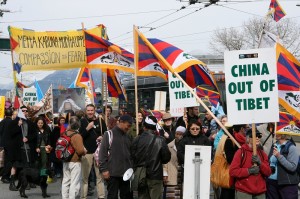
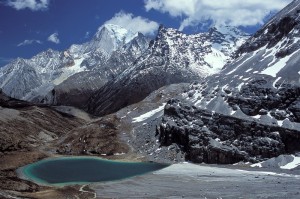
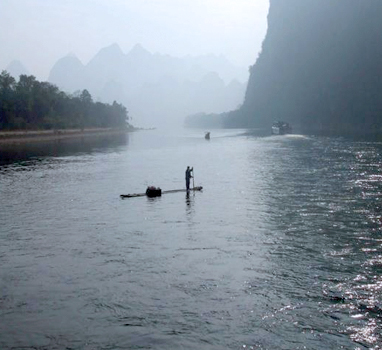
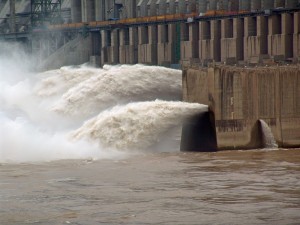

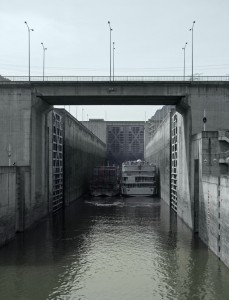

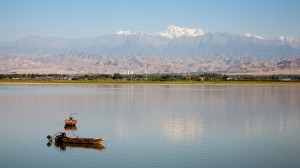
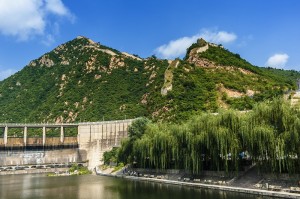


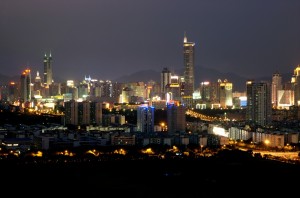





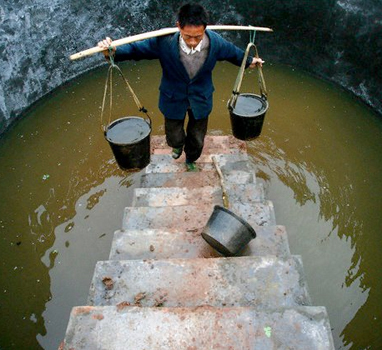
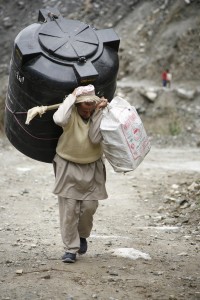
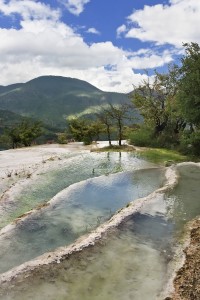
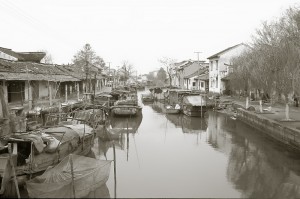
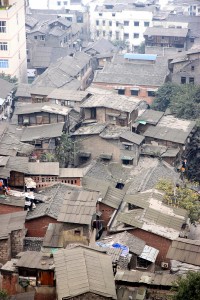

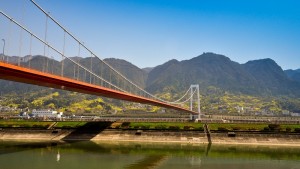


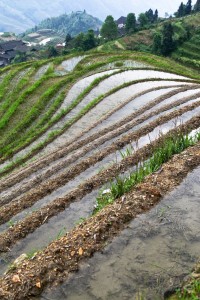


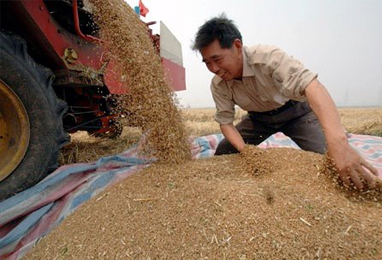


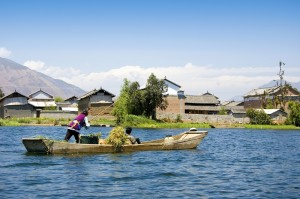
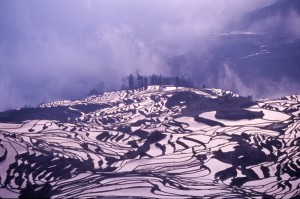
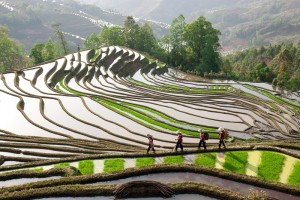
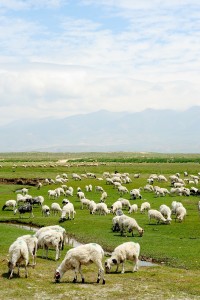

 China is answering these challenges by significantly investing in agricultural technologies including artificial intelligence, big data, robotics, and automation. Not only will these technologies help improve the efficiency and sustainability of China’s agricultural market, but they also represent a big and rapidly growing global business. The market for global agricultural robots, for instance, is projected to exceed $20 billion by the end of 2025, with growth in precision agriculture as a major driver. Artificial intelligence, automation, big data, and robotics are expected to find applications in everything from herding and fish farming to planting and harvesting. Other uses include seeding, irrigation, water leak detection, fertilizing, crop weeding, spraying, crop monitoring and analysis, disease and pest identification and eradication, thinning and pruning, and tracking the growth of plants. In addition to robotics, drones are also increasingly being used to monitor crops, conduct field analysis, manage livestock, plan interrogation and crop spraying. Drones aid farmers to see the big picture of their farmland and to make educated decisions that help to maximize crop yields.
China is answering these challenges by significantly investing in agricultural technologies including artificial intelligence, big data, robotics, and automation. Not only will these technologies help improve the efficiency and sustainability of China’s agricultural market, but they also represent a big and rapidly growing global business. The market for global agricultural robots, for instance, is projected to exceed $20 billion by the end of 2025, with growth in precision agriculture as a major driver. Artificial intelligence, automation, big data, and robotics are expected to find applications in everything from herding and fish farming to planting and harvesting. Other uses include seeding, irrigation, water leak detection, fertilizing, crop weeding, spraying, crop monitoring and analysis, disease and pest identification and eradication, thinning and pruning, and tracking the growth of plants. In addition to robotics, drones are also increasingly being used to monitor crops, conduct field analysis, manage livestock, plan interrogation and crop spraying. Drones aid farmers to see the big picture of their farmland and to make educated decisions that help to maximize crop yields.
